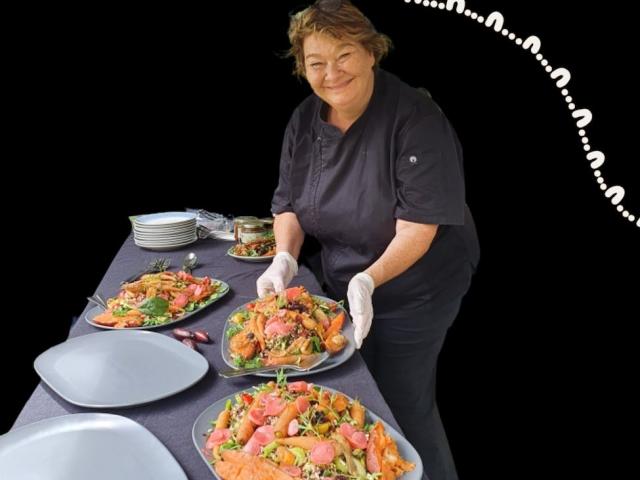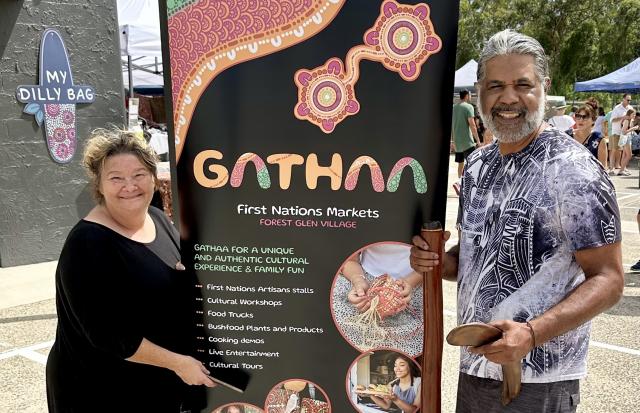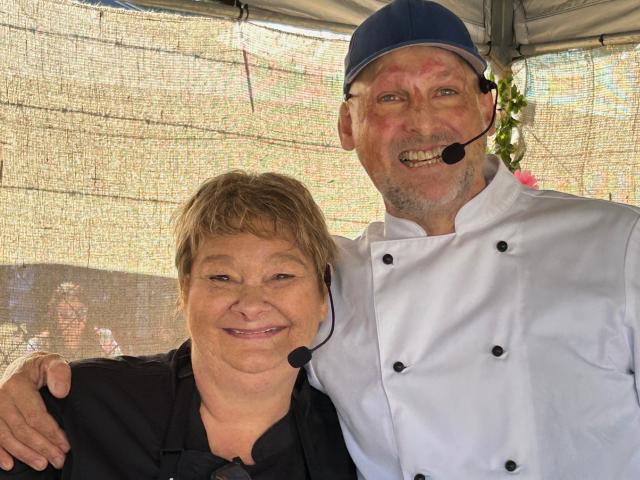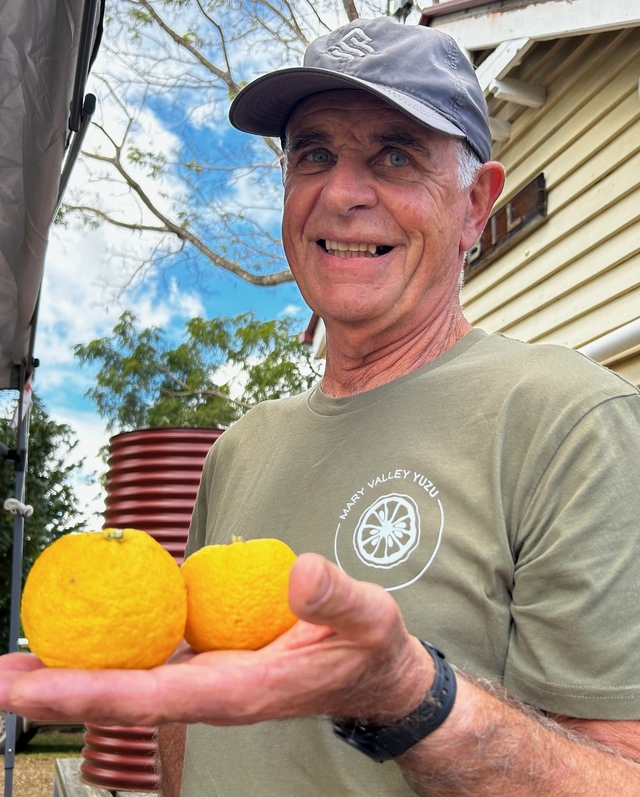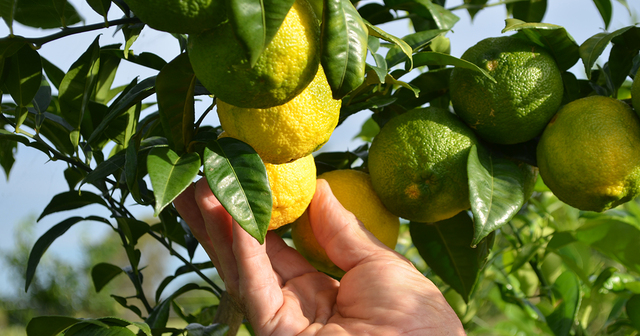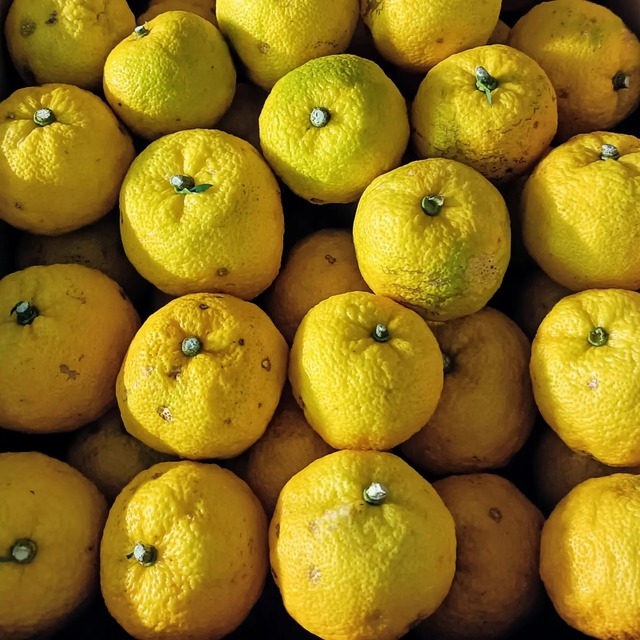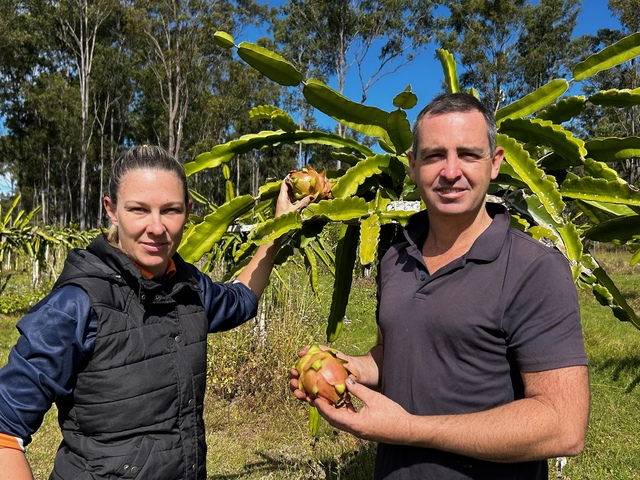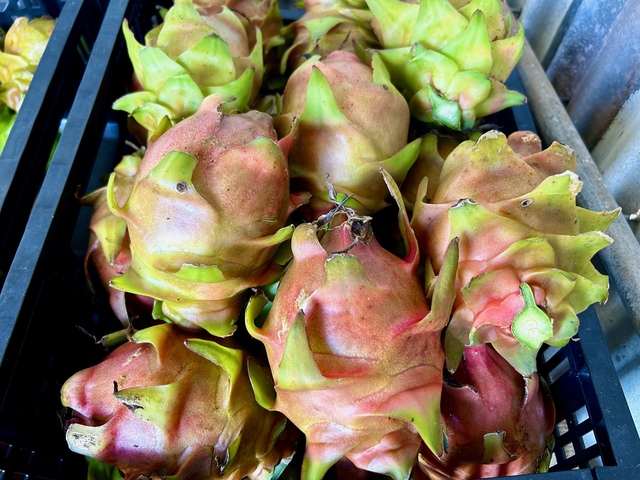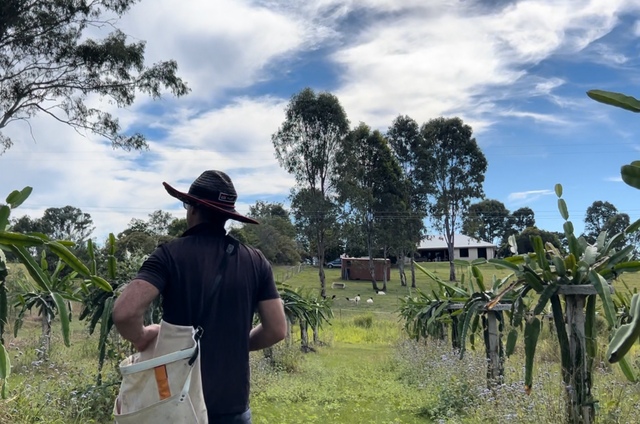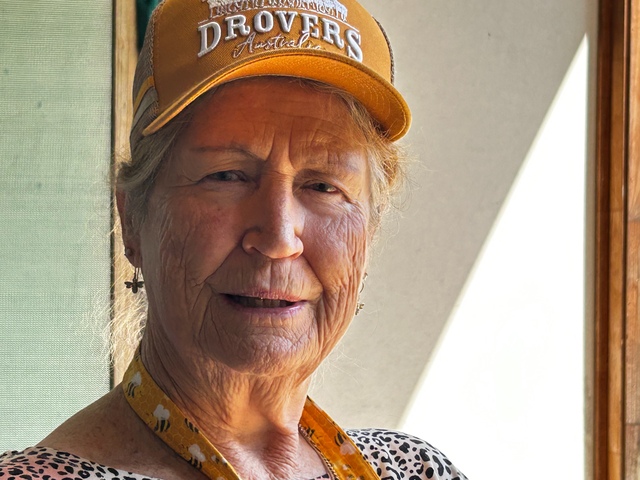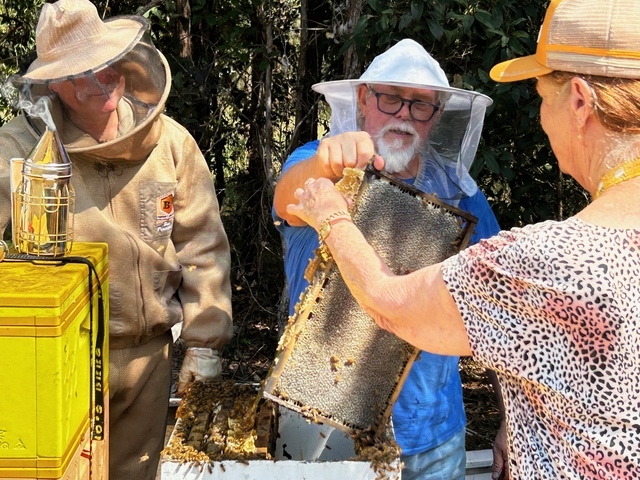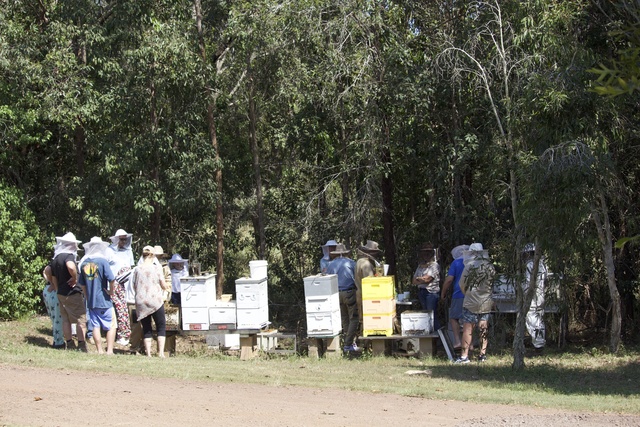In a year where we have again had disruptions to food supplies – most notably eggs – and moderate flood warning for the Mary River in December, there has been a greater emphasis on buying local.
Smaller independent suppliers and farm-gate sales have come further into prominence.
There has been a greater sense of community shown in the support of local events.
The Mary Valley Rattler has shown a good reading of what people want, especially the grazing lane and train rides to Monkland, as well as the tapas evenings on the station.
The way that The Rattler has embedded itself into the Gympie community was seen at the 2024 Queensland Tourism Awards for best volunteer organisation.
GourMay launched the program for 2025 in fine style at Amamoor’s Village Green utilising local food and drink as well as home-grown entertainment – most notably the Mary Valley Circus with juggling and fire dancing.
As we continue to look back at the year, it is obvious Gympie and the Mary Valley have a lot to offer residents as well as visitors.
It is simply a matter of recognising that and supporting the farmers, producers, artists and entertainers.
THE TASTE OF YUZU
A feature of GourMay, the month-long celebration of food in the Mary Valley, is the people you meet and the stories they can tell.
Festival Day at Imbil last year attracted increased numbers of those seeking a deeper interest in good, healthy food.
One of the presenters was Mary Valley yuzu grower Dave Moffat, who provided an entertaining talk about his second year as a producer of this fascinating fruit.
If you were to pick the hardest, toughest, most spiky citrus fruit to grow … it would be yuzu. Yet Dave is passionate about sharing the amazing flavour of this unique citrus fruit.
The mysterious citrus fruit, that is right at home in Japan and the cooler climate of Australia’s southern states, is showing positive signs of adapting to the Mary Valley’s sub-tropics.
While yuzu is much like a lemon in many ways, it then confuses everyone by the differences.
Finicky, is one way of describing the growing of yuzu. High maintenance is another.
Then there is the difficulty in harvesting the fruit due to the large spikes on the tree.
Yet through it all there is this unusual flavour. One that is being sought by restauranteurs and by distillers.
Dave’s passion for yuzu was on show at GourMay’s Festival Day in Imbil when he was able to share the delights, but also the challenges of growing them.
The most cold-resistant fruits of all citrus, yuzu has a golden yellow, bumpy skin, large seeds and pulpy flesh. It tastes like a cross between an orange a grapefruit and a lemon, and is not often eaten alone.
It finds many uses in Japanese cuisine, especially for its fragrant peel which is added at the last minute to soup, salad and slow-cooked
dishes.
The juice or the peel of a yuzu is used as a steam vapour to protect against colds and flu.
Dave’s Mary Valley orchard now has about 300 trees, grown bio-dynamically and using approved organic sprays wherever possible.
“I tried to get started earlier but it was so difficult to get trees,’’ he said. “I had to graft my own trees.
“Yuzu wants to be difficult – from before it’s born to when it’s an old tree, it doesn’t want to play the game.
“It doesn’t like being grafted. You can do it, and we managed it in the end.
“That’s what it’s like getting started in horticulture.
“The first harvest has been 180kg… it was enough to show that, yes, they do grow in Queensland.
“Up here we are on a latitude of 24 degrees but in Japan it’s a latitude of 33 degrees.
“We are much closer to the equator than they are.That’s been a bit of a trick to see if that would be okay.
“One nice thing about it is we can have fruit here well before anywhere else in Australia.
“There is a grower in Victoria and the thing is when I’m finishing the harvest he’s just starting.
“We’ve had interest from a Japanese restaurant in Noosa.
“There’s lots of development to be done as the product gets known. We will be able to reach out to more restaurants – not just Japanese but seafood as well.
DRAGONFRUIT DREAMING
Balancing work and life can be hard, especially with the demands of the modern world.
Yet for Bruce and Sherry Lowe it is easier because they both do what they love – farming. In their case it is dragonfruit, bee-keeping, and growing herbs and vegetables.
Both grew up in the Mary Valley and now live and work in the area every day – except when Sherry’s role as general manager of the Mary Valley Rattler calls her away to promote not just the heritage tourist train but the wider Gympie region.
That again is something she is passionate about.
Just like their property at Bells Bridge. Our catch-up needed to be before the end of June as the dragonfruit crop was almost finished for the season.
Bruce has been balancing getting the fruit off the vines with his work as a mobile mechanic, mainly for farm machinery.
Ningana is a 16-acre property the family use as a combination of grazing land, orchards and for a tunnel shelter to grow herbs and vegetables.
They grow dragonfruit, harvest honey, herbs and vegetables, as well as keeping a small flock of sheep.
The property is predominantly north-south with the slope to the north-east, and a dam in the valley.
There are about 200 posts for the dragonfruit – with four vines on each.
Dragonfruit use aerial roots to climb up large posts or tree trunks, and they get moisture from the air.
Bruce designed the posts for their orchard – made from concrete so as to get four vines to a post.
He was introduced to the fruit by his father Henry, who was growing a few at his home.
“I always had an interest in it. We’ve always wanted to get into some sort of farming and this ticks a few boxes.
“You don’t need highly fertile soil, they’re quite drought resistant.’’
Sherry said they ended up planting around the post so that they get the nutrients they need.
“It’s all drip irrigation throughout the property from the dam.
“We were trying to mulch once a year and feed the plants minerals as needed. The mulches include wood-chip or sugarcane, together with biochar to put carbon back into the soil – that increases the micro-biology as well.’’
Bruce and Sherry are growing a few different varieties but mainly commercial reds, a red flesh variety – and some megalanthus. These
are the yellow ones with white flesh and lemonade flavour.
The yellow dragonfruit are the rarest seen in Australia – and the Ningana fruit took out first place at the 2024 Gympie Show.
The curiosity about dragonfruit is that in many shops they are not labelled red or white flesh.
“You might be able to see it on the box that they are delivered in,’’ Bruce said.
“They make an amazing dessert – this brilliant red with ice cream. It just looks great.’’
The fruit is high in fibre and antioxidants, Sherry said.
“It’s a very refreshing fruit because of the moisture content. It must be served chilled.’’
THE VALUE OF GARDENING
Costa Georgiadis. (417236)
Gardening appeals to people of all ages and backgrounds. The value of gardening and the appreciation of the Australian landscape can easily be taken for granted.
Yet it makes an enormous contribution to communities, binding them together through a variety of ways to create a rich tapestry of life.
Someone who knows a lot about the way gardening can weave its way through society is Costa Georgiadis – Australia’s most famous
landscape architect and TV presenter who has an all-consuming passion for plants and people.
Costa was at the 40th Queensland Garden Expo at Nambour in July, and we have found through the years he always has time to stop for a chat or
a photograph as he makes his way through the crowds.
“I’m just at the bus stop,’’ he texts, and almost an hour later appears at the marquee. Blue beanie, orange-rimmed sunglasses and another of his famous T-shirts with a message.
This time it’s “I’m a WILD wildflower lover.’’
Just like his role on ABC-TV, Costa’s general role in the community is very established.
He has a very strong community presence and gardening has a similar effect.
“I’m still involved with our local primary school, junior landcare … all of those activities you know.
“We refurbished the nature pond at the school – that was gifted to the school by the year six class in 2003. I refurbished it in 2012
and we refurbished it again a couple of months ago.
“It’s been 12 years but it was really important for me to explain to the current kinders and children there that this was the vision of the year sixers back then, and it’s our role to continue the story.”
ABUZZ ABOUT BEES
We know that bees play an important part in nature but don’t necessarily understand how vital they are for our everyday survival.
We know that honey is a healthy product, whether eaten or applied to various ailments and injuries. It does not deteriorate over time.
Yet what about bees? How do they impact everyday life?
That is why I was at Kandanga on a Saturday morning … to find out more about these amazing insects.
“You’re not allergic to bee stings are you?”
That was a question asked of me when I visited Valley Bees, a self-help group of beekeepers that has been active for almost 14 years.
The group meets on the third Saturday of each month at Happy Bee Wellness Resort – and on the first Saturday at Gympie Landcare.
Valley Bees president Pauline Alexander took me down to the hives where the group had gathered, to check on the bees and take the frames out to extract the surplus honey.
I had bees on my arms as well as in my hair, while taking photos and talking with club members.
Pauline had given me some fresh honeycomb from a hive to try … and the honey was running down my fingers, attracting more bees.
“We started in February 2011,” Pauline said. “We had people wanting to know about bees and beehives, so about six of us got together. Athol Craig was the instigator.
“We started at the Kandanga Hall and were expecting 40 or 50 people but got 88 at the first meeting. There were people from Gympie and the wider area – Hervey Bay, Bundaberg Noosa.
“They came from everywhere – everyone was interested in native bees.”
“They wanting to learn – they didn’t know enough about them. They wanted hives but weren’t sure what to do.
“People wanted to know could they just start up a hive?
“They just put a box down and the bees go into it … that’s how it all began.”
By this time we were up at the shed having a cup of tea and home-made lemon cake.
That’s when our conversation took another interesting turn.
There are times in life when you cannot anticipate what you are going to find when you take the time to look and to listen.
Everyone has a story to tell of their life and Pauline just amazed me as she talked about growing up in the Australian bush, about the people you meet along the way, about the resilience of the generations before us and the impact they can have on the landscape.
“I grew up out west, at Blackall. I was born in Barcaldine but lived in Blackall.
“My mum and dad were drovers. I was based there until I was six.
“We never lived in a house early on, as we were always on the road. As children, we had to go into town and board because we needed to go to school.
“There were nine of us. Mum taught the older ones and then by the time we were 13, we had to go out and work but did our schoolwork in the afternoon.
“We’d come across beehives and this Aboriginal man working with us would show how to poke a stick into the beehive and bring out the honey and eat it.
“That was the start of it. I really liked the way they did it without disturbing the beehive itself … we didn’t destroy it.
“We just poked down and got enough honey to eat, and that was it.”
Pauline came to Gympie when she was 16 and met a beekeeper, remaining friends with that family for quite a while.
“I ended up meeting another beekeeper and we’ve been together 32 years. Norm Salt.”
Honey Bee Wellness Retreat opened about 2016 and the bees help with the pollinating of the farm and gardens while Valley Bees harvest the honey.
To collect just 1kg of honey, honeybees will need to make about 150,000 flights.
They will fly between 250,000 to 450,000km – that’s the equivalent of more than 10 times around the world – and visit more than one million flowers.
A strong productive beehive has between 30,000 and 50,000 bees.
“The club is about getting people together, talking,” Pauline said, “sharing ideas and information.
“There is free information but also a social aspect … it gets people out and talking. So there is physical and mental activity.
“Each year have an open bee day, at Mary Valley State College late in August.
“On GourMay festival day in Imbil I did a display of honey at the RSL Hall. It’s amazing how many people we get coming in and just asking questions about bees and to buy honey.
“There are so many health benefits of honey but just being around bees gives you patience, and a broader understanding.
“You have to be gentle, you have to nurture them. And it gives you a satisfaction. It calms you down.
“You have to be calm around bees. Once you get uptight, the bees come buzzing.
“They can smell tension. And as sure as eggs you will get stung.
“It’s the same with cattle, you have to be calm. Dad used to say to sing, whistle … don’t yell and shout.
“Once you do the cattle panic.”
Growing up in Western Queensland, Pauline said it wasn’t until aged seven that she saw real rain.
“There were showers but not real rain. You could hardly see where it had hit the ground.
“But there was this time when it rained for three or four days and we had to walk four-and-a-half miles into school.
“Coming home and it was still raining and there was water running everywhere. I thought I was going to drown.
“And it was raining little fish. I put my straw hat in my outstretched skirt and was picking up all these little fish and taking them home.
“I put them in the bath because it had water in it.
“Oh my, did I get into trouble. Dad let the water out and I had to pick up all these dead fish.
“A lesson learned.
“People asked: ‘Are you sure it wasn’t cats and dogs?’
“No, I picked up a lot of them but there were so many going down the drains.”
AN INSPIRING JOURNEY
From the outback to the culinary heights of Queensland, Aunty Dale Chapman is an innovator in First Nations bush food as well as art, culture and business.
At the monthly Gathaa Markets in Forest Glen, Aunty Dale spoke about a life turning full circle.
The emergence of Australian native bush food into shops and onto plates should come as no surprise.
Australians have been incorporating bush tucker into our diet for ages – bunya nut, wattle seed, finger lime and lemon myrtle.
First Nations people have been gathering and using these foods for more than 60,000 years; and the foods a part of the Australian landscape for more than 100 million years.
The realisation is there’s something in bush tucker as far as taste, health and nutritional benefits is concerned.
A significant role in getting native bush food to our tables has been played by Aunty Dale. She is part of a country-wide movement to have First Nations Bushfood and Botanical Alliance Australia (FNBBAA) as an advocacy and economic development alliance empowering indigenous people and business.
In many ways this is her legacy … after developing her cooking skills with others, it is now her turn to give back, and to encourage others.
The First Nations business at Forest Glen, My Dilly Bag, is a hub of activity focussed on native bush food, indigenous art, craft and culture.
From that has come the Gathaa markets, focussing on the talents of people from within South East Queensland.
Aunty Dale’s life journey has taken her full circle – from growing up in Western Queensland to Noosa’s top echelon of restaurants and now to her own business.
“From slaving over a hot stove … now I’m here,’’ she said.
“It’s nice to share my knowledge and the space. It’s wonderful to share it with others.
“Covid was the time to re-evaluate and do things. We were able to stay in our own back-yard and travel to our regions.
“We like to think people became more aware of natural resources – foods.’’
A celebrated and award-winning chef, cookbook author, public speaker, television personality, and lecturer, Aunty Dale is active in Aboriginal affairs, a member of the Queensland Indigenous Chamber of Commerce, Slow Food International and chair of Stepping Black Indigenous Australia.
An Adjunct Senior Fellow in the School of Agriculture and Food Sciences at the University of Queensland, her goal is to introduce these unique foods and tastes to the public but also to re-introduce her people to using bush tucker again.
She considers traditional food to be an effective weapon in the fight against heart disease and Diabetes 2 which are some of the major health problems affecting many Aboriginal people today.
Together with such luminaries as Aunty Raylene Brown in the Northern Territory and Aunty Pat Torres from Western Australia, they are establishing indigenous cultural and intellectual property over the full supply chain of bush food production.
In this way they are ensuring it’s grown and harvested by indigenous people according to cultural protocols, and not taken over by multi-national companies.
Aunty Dale attended the 2006 Terra Madre, Slow Food’s international food festival in Turin, Italy.
However, her involvement with Slow Food goes back to when celebrity chef Matt Golinski assisted in a fundraiser to go to France in 2000 and learn more about cooking.
“We’ve known each other a long time,’’ she said. “He encourages me a lot.’’
By necessity, the indigenous Australians had extensive knowledge about the flora and fauna that surrounded them, and it was this knowledge that has sustained them for thousands upon thousands of years.
Native foods such as herbs, spices, fruit, seeds, and nuts are nutrient-rich and high in fibre. Among them are desert quandong, desert lime, ruby saltbush, Tasmanian pepperberry, Moreton Bay chestnut and bush coconut.
Animal sources including kangaroo, emu, crocodile, and witchetty grubs, provide good protein.
Gathaa serves as a platform for budding First Nations entrepreneurs, providing them with the visibility they need, especially when they don’t have traditional storefronts or an online presence.
Aunty Dale’s remarkable foresight and passion presents an opportunity for everyone to benefit, learn and get a taste for traditional Australian food.

